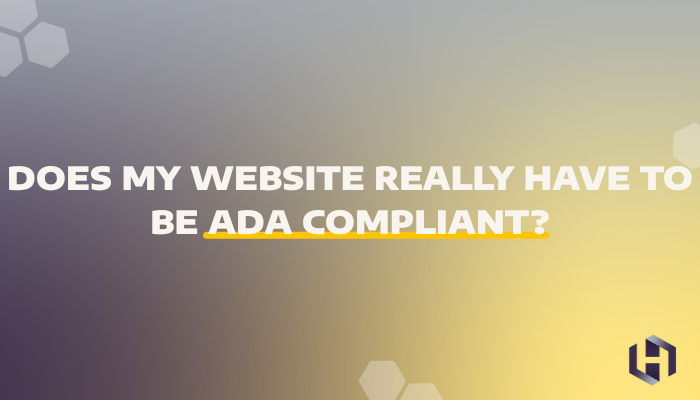As you open your digital doors to the world, your website becomes the primary interface between your business and a diverse array of visitors from every corner of the globe. It's your digital handshake, your storefront window, your brand's first impression. But in crafting this digital experience, it's essential to ask: is this welcoming space accessible to everyone? Accessibility goes beyond mere convenience; it's about inclusivity, ensuring that people with disabilities can navigate, understand, and interact with your website just as easily as anyone else.
Making websites accessible involves eliminating obstacles that hinder individuals with disabilities from utilizing them efficiently. Given the World Health Organization's report that 15% of the global population has some form of disability, this initiative is of paramount importance. Specifically, in the United States, the Centers for Disease Control and Prevention notes that 26% of Americans, or 61 million people, live with a disability.
Understanding ADA Compliance
The Americans with Disabilities Act (ADA) is a civil rights law that prohibits discrimination against individuals with disabilities in all areas of public life. While it doesn't explicitly mention websites, recent legal interpretations and court decisions suggest that online spaces should be as accessible as physical ones, especially for businesses and public entities.
The Legal Landscape
The legal requirement for a website to be ADA compliant often hinges on its connection to a physical business considered a "place of public accommodation." Courts have increasingly viewed websites as extensions of these physical spaces, necessitating accessibility features that accommodate a wide range of disabilities.
What Constitutes Compliance?
ADA compliance for websites means ensuring that your site is navigable and understandable for users with diverse needs. This could include text alternatives for images for visually impaired users, captioning for videos for the hearing impaired, and keyboard navigation for those who cannot use a mouse.
Why Compliance Matters
Ensuring your website is accessible to all is a crucial aspect of modern business ethics and legal compliance in the digital age. The significance of ADA compliance goes beyond merely following regulations. It reflects your brand's commitment to providing equal access to information and services for everyone, including individuals with disabilities. This commitment can profoundly impact your business, from mitigating legal risks to broadening your audience reach. Let's delve into the importance of making your website ADA compliant and how it benefits your business on multiple fronts.
Legal Ramifications
Overlooking ADA compliance can leave your business vulnerable to legal repercussions. An increasing number of lawsuits and legal actions highlight the importance of proactive measures towards website accessibility. Individuals or groups advocating for disability rights can initiate these legal challenges to ensure digital content is accessible to all. By proactively addressing ADA compliance, your business can avoid the complications and costs associated with legal entanglements.
Broader Reach and Inclusivity
Embracing ADA compliance allows your business to welcome a more diverse audience to your digital doorstep. An accessible website breaks down barriers, enabling individuals with various disabilities to engage with your content, use your services, and purchase your products. This inclusivity not only expands your market but also enhances your brand's reputation as a socially responsible leader committed to equality and accessibility. In a world that increasingly values diversity and inclusion, making your website accessible to all is a strategic business advantage that boosts your brand's appeal.
Making Your Website Accessible
Embarking on the journey to ADA compliance might seem daunting, but it's both feasible and beneficial. Begin with an accessibility audit to identify areas for improvement, and consider incorporating Web Content Accessibility Guidelines (WCAG) as a framework for making your site more accessible. Several tools and services can help you evaluate and enhance your website's accessibility. Automated testing tools can identify technical issues, while consulting with accessibility experts can provide deeper insights and solutions.
So, does your website really have to be ADA compliant? While the legal requirements might vary, the answer leans heavily towards "yes" from both a legal risk management perspective and a commitment to inclusivity. Making your website accessible is not just about adhering to regulations; it's about embracing the full spectrum of human diversity and ensuring that everyone can engage with your digital content. In doing so, you not only safeguard your business against legal risks but also champion the values of inclusivity and equal access for all.
Do you need help making your website ADA compliant and accessible to a wider audience? Contact us, and let us help you turn your website into a conversion machine.




.png?width=100&height=100&name=Why%20Were%20Not%20a%20Marketing%20Agency%20(And%20What%20That%20Means%20for%20Your%20Growth).png)
